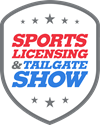
Who doesn’t have that one go-to tumbler or coffee mug, displaying the logo of his favorite NFL or MLB team? That may be the case with the vast majority of sports fans, but the truth is, use of a licensed logo is only half the battle when it comes to designing a product whose goal is to appeal to the masses.
The design sourcing process for licensed products is relatively straightforward, with variances that depend on the product being designed.
“Here at Tervis, we specifically create artwork for double-insulated plastic tumblers in a variety of sizes and styles,” says Brian Weaver, senior creative and design director for Tervis, who says very little of the company’s artwork is sourced externally. “We develop virtually all designs with in-house designers and illustrators as custom creative.”
Weaver says the inspiration for Tervis’ custom creations comes from the results of active market trend services and competitive research in related categories. The company is self-sufficient in developing art or other creative elements internally. The typical challenge when it comes to design lies in how team logos are best integrated, and how fast Tervis can get resulting designs through the licensing process.
ThermoServ considers design trends that are prevalent in the market as it relates to apparel and hard goods. “We incorporate various design backgrounds and patterns to coordinate with the sports brand logos,” says Darryl Gaines, director of marketing, ThermoServ. “The key is taking the time to research, study and apply.”
For Turner Licensing, the seamless art design process involves an in-house design team that creates layouts for all of its licensed products, taking each licensor’s style guide into consideration.
“We then work with third-party partners to obtain images for anything requiring photos, such as players, teams and stadiums,” says Ted Kochowicz, brand manager for Turner Licensing. “At times, we have had to overcome challenges such as usage rights, which are always a concern for photographic and image-driven products.”
Kochowicz says Turner also has the REALTREE brand license for stationery products that are co-branded with a select number of NFL teams.
“The design elements for that product line came from the REALTREE style guide, the NFL style guide, and our creative team,” Kochowicz says. “By combining assets from each license — and with our creative team’s capabilities — we are able to develop products that are appealing to each licensor, as well as loyal consumers of both brands.”
In-house design teams and departments keep companies efficient, although some freelancers may be required on occasion. “We have an in-house creative team handling approximately 85% of the design work,” Weaver says. “We do use some freelance support for select projects, peak seasonal timeframes and production art support.”
The Process
As one might guess, working with leagues or collegiate institutions when designs other than their logos are present on the product can be an intense process that requires attention to a lot of minutiae.
“The universities and leagues are very specific about how their marks are presented on products,” says Gaines, ThermoServ. “Ideally, patterns or backgrounds should not obstruct the marks or identities, but should help compliment it for appeal and presence on shelf at retail.”
Weaver says all design submittals follow a uniform approach. However, getting approval for a particular “look” that may be unique to a team or school can require higher-level initial previews and discussions prior to the standard process. “This way, we can explain the design and concept objective with key decision makers prior to developing something that may not get approved,” he says.
Weaver says a standard approval process may involve a concept submittal via a PDF, revisions — as needed — based on comments from licensors, a resubmittal and, finally, sample submittal for final approval.
Kochowicz says the approval process varies by league, but each one usually is looking at overall design, correct spelling of player names, correct image usage, correct dates, current and correct player biography information and approved usage of team or league logos.
Once a concept is approved, Turner will move forward with expanding that concept across the product line for that particular league or college. “There could be multiple versions involved in this process, based on feedback from each of the leagues and colleges, until a final concept is chosen,” he says.
Relying on Research
Staying up to date on trends and the latest designs or art elements is of the utmost importance when considering what will appeal to consumers. Weaver says research at Tervis is multifaceted, with the company constantly reviewing market, competitive and design trends through a variety of channels. Just as important, Tervis relies on its internal personnel and combined market expertise.
ThermoServ visits specific retail channels where similar products are being distributed. Exhibiting at industry trade shows and meeting with customers during line-review season also are helpful, as is online research.
Of course, paying close attention to players, fans, sports retailers and other partners, such as sports apparel licensees, is a ground-level approach, which is what Turner prefers. “With our team of designers, we can identify what’s popular in sports apparel and translate that into calendars, while appealing to the same demographic,” Kochowicz says.
What’s Popular Today
Designs and artwork in 2016 offer something for everyone. Tervis has identified a variety of looks, including aggressive, hand-drawn typography with distressed textures and phrases; tropical prints; and word-cloud typographic textures.
Gaines asserts that while Chevron remains popular simple and clean designs also are appealing.
Kochowicz says that, in 2016, Turner has been focusing on designing larger player images, more high-action shots and oversized images that break the border and consume more of the page.
“We have also created artistically designed backgrounds, which feature bolder colors,” he says. “All of our design elements and patterns are created with a younger demographic in mind.”
Jennifer Morrell is an award-winning Atlanta-based freelance writer who has written for a number of consumer and trade publications. For more information or to comment on this article, email Jennifer at jennmorrell@hotmail.com.
